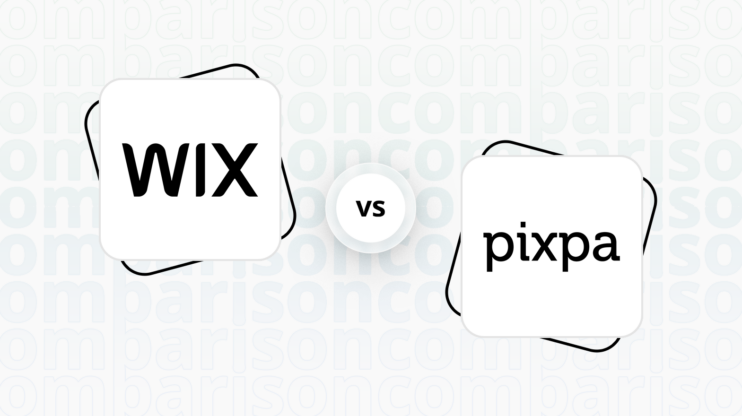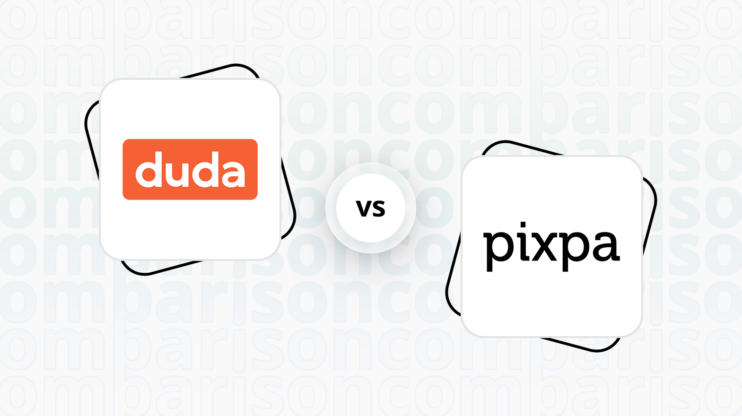Final verdict
Adobe Portfolio and Web.com offer distinct advantages, catering to different user needs.
-
Adobe Portfolio (Overall Grade: 5.5/10)
excels in providing a specialized platform for creative professionals. Its strengths lie in design functionalities, ease of use, and integration with Adobe Creative Cloud, making it ideal for photographers, graphic designers, and artists. Adobe Portfolio’s focus on showcasing creative work, coupled with its user-friendly interface and high-quality hosting, positions it as a top choice for creatives looking to build a professional online presence. However, its lack of ecommerce capabilities and AI features limits its appeal to those looking to sell online or leverage advanced website automation. -
Web.com (Overall Grade: 5.8/10)
, on the other hand, offers a more versatile platform suitable for a broader audience, including small businesses and individuals without coding expertise. With its ecommerce features, AI capabilities, and user management options, Web.com caters to users looking for a comprehensive website builder that supports online selling and automated website creation. While it may not match Adobe Portfolio’s design sophistication for creative portfolios, Web.com’s broader range of features and slightly higher overall score make it a competitive option for users with diverse needs.

|

|
|
|---|---|---|
|
Design functionalities & templates |
7.4 |
6.4 |
|
Ease of use |
8.7 |
6.4 |
|
Ecommerce |
0.0 |
6.3 |
|
Website Editors |
7.4 |
6.6 |
|
Product testing options |
7.6 |
0.2 |
|
Price |
7.7 |
7.4 |
|
Hosting quality |
7.0 |
5.9 |
|
Website speed optimization |
6.2 |
5.8 |
|
Plugins and integrations |
6.7 |
6.7 |
|
Marketing features |
3.7 |
7.0 |
|
Customer support |
7.3 |
7.3 |
|
Security |
8.1 |
7.6 |
|
AI capabilities |
0 |
7.3 |
|
User Management |
3.0 |
5.2 |
| Overall |
5.5 |
5.8 |
Best for ecommerce
 0.0
0.0
 6.3
6.3
Verdict
: For users looking to sell online, Web.com is the clear choice over Adobe Portfolio, which lacks ecommerce capabilities entirely.
-
Adobe Portfolio
: Designed exclusively for showcasing creative portfolios, Adobe Portfolio does not offer any ecommerce features, making it unsuitable for users looking to sell products or services online. -
Web.com
: With a suite of ecommerce features including product listings, marketing tools, and payment gateway integration, Web.com is equipped to support small to medium-sized online stores. Despite some limitations in template variety and customization, it provides a solid foundation for building and managing an ecommerce presence.
Best for informational & business websites
 7.4
7.4
 6.5
6.5
Verdict
: Adobe Portfolio is better suited for informational business websites, especially for creative professionals looking to showcase their work, thanks to its higher score and specialized features.
-
Adobe Portfolio
: Tailored for creatives, Adobe Portfolio shines with its focus on showcasing work through visually appealing, responsive templates. It’s ideal for photographers, designers, and artists who need a professional online presence without the complexity of coding. The platform’s integration with Adobe Creative Cloud enhances its appeal to its target audience, making it a strong choice for informational business websites in the creative industry. -
Web.com
: While Web.com offers a broad spectrum of templates and features that cater to a variety of industries, it falls short in providing the specialized, creative-focused functionalities that Adobe Portfolio offers. Its lower score for informational business websites suggests that it might be more suited to general business needs rather than the specific demands of creative professionals.
Detailed comparison
Design functionalities & templates
Design FunctionalitiesRepresents how well each platform allows for creative design and customization of websites.Score Components:
- Template Variety (30%): Range and quality of design templates.
- Customization (30%): Flexibility and options for design alterations.
- User Interface (20%): Ease and intuitiveness of the design process.
- Responsiveness (10%): Adaptability to different devices and screen sizes.
- Innovation (10%): Unique design features and tools.
 7.4
7.4
 6.4
6.4
🏆
Winner: Adobe Portfolio.
If you’re a creative professional looking for a platform that offers a selection of customizable templates designed specifically for showcasing creative work, Adobe Portfolio is the preferred choice.
Adobe Portfolio offers a selection of customizable templates designed for creatives across various fields, such as photography, graphic design, and web design. These templates are responsive and tailored to showcase creative work effectively across all devices. With the intention of adding more layouts over time, Adobe Portfolio provides a flexible foundation for users to personalize and present their projects in a polished manner.
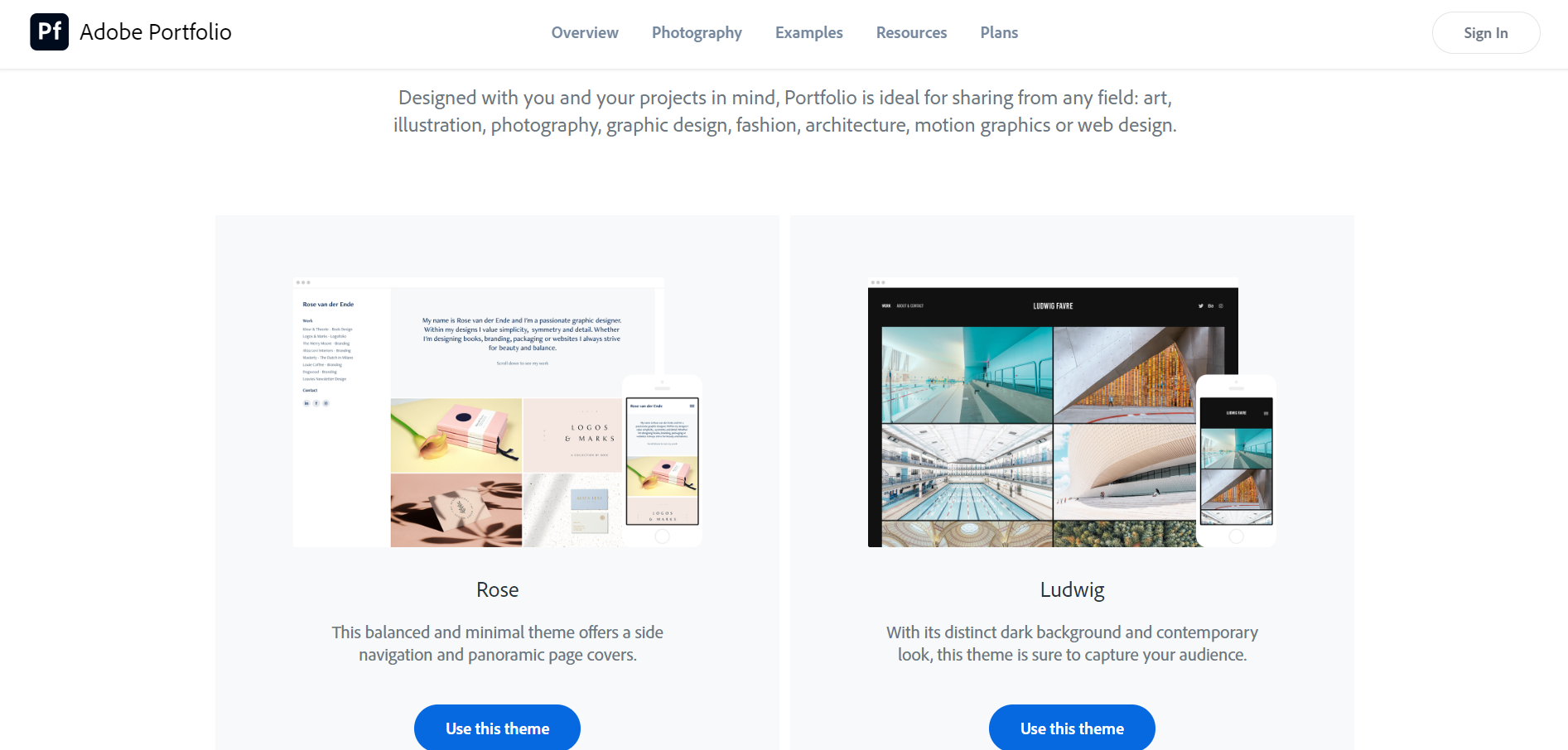
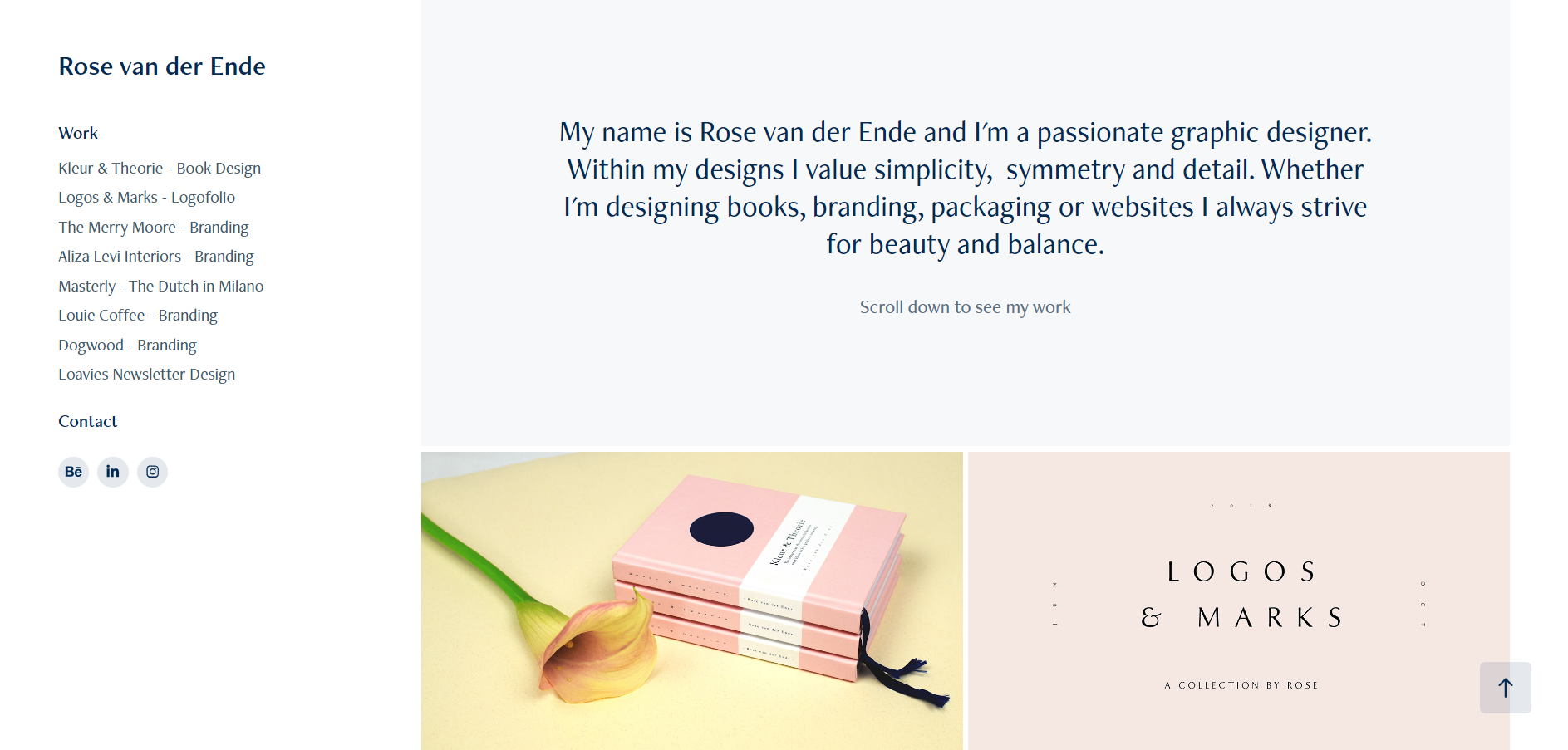
On the other hand, Web.com offers over 100 website templates designed to cater to a broad spectrum of industries and personalization needs. These templates are structured to be straightforward in customization, allowing users to easily adapt their chosen designs to suit their unique brand identity through the platform’s editor. The variety encompasses categories ranging from business and services to creative arts, ensuring users can find a fitting base for their website regardless of their field or interest.
Get a head start on website creation with AI
Create a custom website tailored to your business needs 10X faster with 10Web AI Website Builder!
Ease of use
Ease of useReflects the platform’s overall user-friendliness.Score
Components:
- Learning curve (40%): Quickness and ease of getting started.
- Interface design (30%): Simplicity and intuitiveness of layout.
- User guidance (20%): Quality of tutorials and support.
- Flexibility (10%): Adaptability to various user skills.
 8.7
8.7
 6.4
6.4
🏆 Winner: Adobe Portfolio
. With a score of 8.7, Adobe Portfolio is designed with a user-friendly interface that caters to creatives looking to showcase their work with minimal fuss. Web.com, scoring 6.4, offers a robust platform but might not be the best fit for those seeking quick, simple website setup or advanced professional design tools.
Learning Resources
🏆 Winner: Adobe Portfolio
. Adobe Portfolio provides extensive and varied learning resources, including detailed tutorials and articles covering a broad spectrum of topics, from basic setup to advanced customization. Web.com offers a range of AI-powered tools and a comprehensive knowledge base, but Adobe Portfolio’s resources are more extensive and varied.
For ecommerce
EcommerceMeasures the platform’s effectiveness in supporting online business activities.Score Components:
- Ecommerce themes and templates (20%): Variety and design of templates.
- Product management (25%): Ease of managing and organizing products.
- Payment options (25%): Variety and convenience of payment methods.
- Ecommerce features (20%): Features for managing an ecommerce store.
- Integration (10%): Compatibility with external e-commerce tools and services.
 0.0
0.0
 6.3
6.3
Adobe Portfolio is not designed for ecommerce, as it lacks ecommerce capabilities. It is primarily a platform for creative professionals to showcase their work. On the other hand, Web.com offers a suite of ecommerce features aimed at simplifying the creation and management of online stores. However, it has been noted for its complex setup process and limited template variety, which might restrict creative freedom.

|

|
|
|---|---|---|
|
Ecommerce themes and templates |
0.0 |
5.5 |
|
Product page customization |
0.0 |
6.0 |
|
Payment processing and commissions |
0.0 |
6.5 |
|
POS capabilities |
0.0 |
4.0 |
|
Payment gateways |
0.0 |
7.0 |
|
Product numbers |
0.0 |
5.0 |
|
Additional ecommerce features |
0.0 |
6.0 |
Adobe Portfolio ecommerce features:
Adobe Portfolio does not have any ecommerce features.
Web.com ecommerce features:
- Product listing
- Marketing Features
- Shipping options
- Payment Gateways integration
Ecommerce themes & templates
Adobe Portfolio does not have any ecommerce specific templates. In contrast, Web.com provides around 15 ecommerce templates designed to help businesses quickly launch and customize their online stores. These templates are compatible with Web.com’s website builder, facilitating straightforward customization and integration for digital storefronts.
Product page customization
Adobe Portfolio does not have product page customization features. However, Web.com’s website builder offers a suite of tools for e-commerce stores, including product category management for organizing inventory and improving navigation, and product listing features for adding detailed product information and images. Users can create and manage product variants to accommodate items with multiple options, enhancing the customer shopping experience.
Payment processing
Adobe Portfolio does not have any payment processing capabilities. On the other hand, Web.com supports popular payment gateways like PayPal, Stripe, and all major debit and credit cards, ensuring a wide array of payment options for customers. Details on transaction commissions, particularly whether Web.com imposes additional fees on transactions processed through these gateways, were not clearly stated in the reviewed sources. Typically, the payment gateways themselves may charge transaction fees; however, the presence of any supplementary commissions from Web.com remains unspecified.
Website Editors
Website EditorsEvaluates the platforms’ website building and editing capabilities.Score Components:
- Customization tools (40%): Range and power of editing features.
- Editor usability (30%): User experience within the editor.
- Design flexibility (20%): Freedom in layout and design changes.
- Update and maintenance ease (10%): Simplicity of updating and maintaining the site.
 7.4
7.4
 6.6
6.6
🏆
Winner: Adobe Portfolio
. Adobe Portfolio, with a score of 7.4, offers a user-friendly website builder editor designed for creatives to showcase their work. It allows for the integration of high-quality images and videos, offers a variety of responsive templates tailored to different creative fields, and provides seamless Adobe Creative Cloud integration. However, it has a limited range of external integrations, widgets, and add-ons, focusing primarily on creating dynamic galleries and image collections.
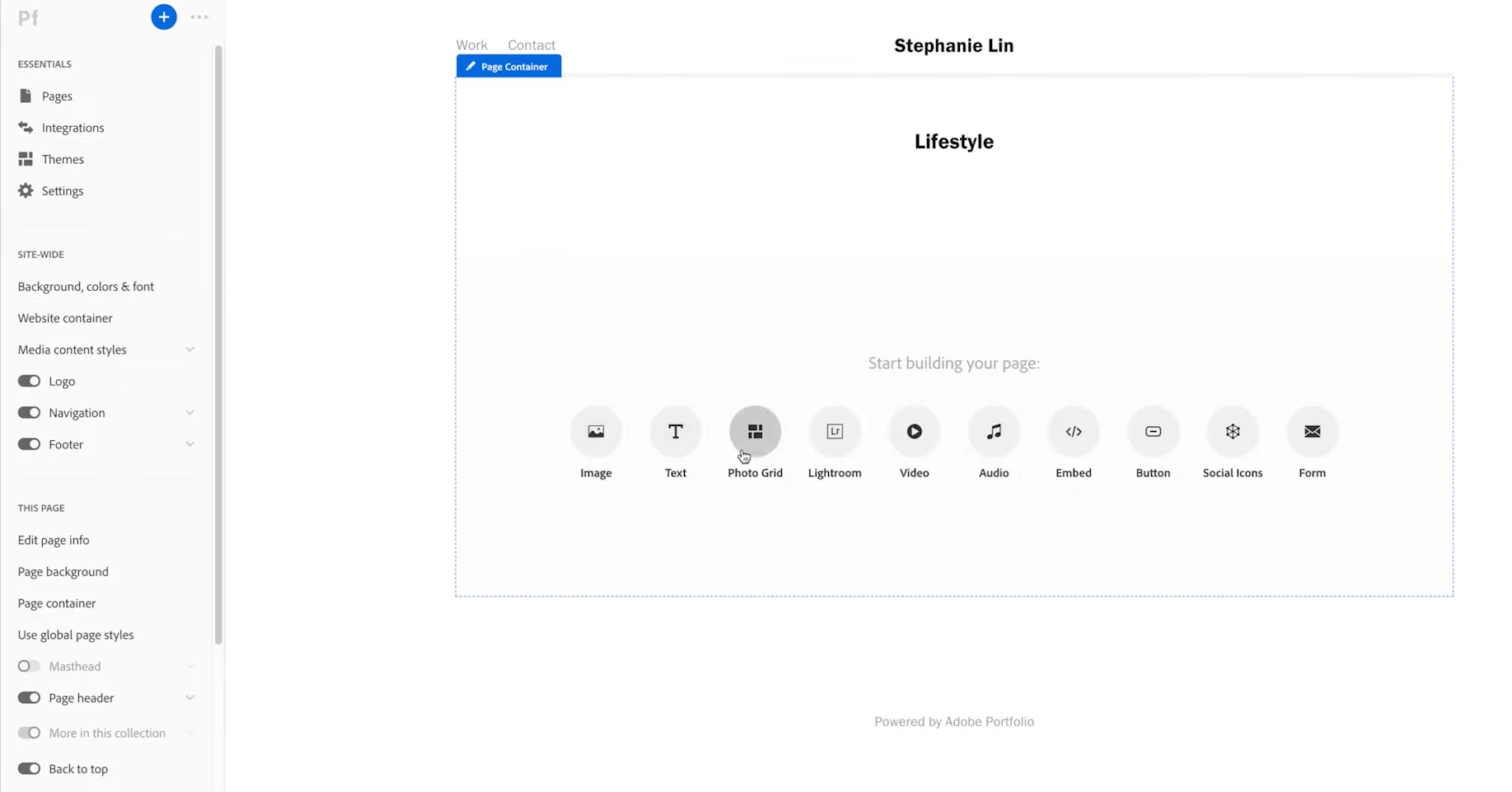
Web.com’s website builder, scoring 6.6, offers a user-friendly platform with a variety of templates and a drag-and-drop interface for easy customization. It supports basic e-commerce capabilities suitable for small businesses, alongside features like analytics, social media integration, and email services. However, for more advanced functionalities like promotional pop-ups, calendars, or comprehensive blogging tools, the platform may fall short unless users are willing to add custom code.
Mobile editor/app
 0
0
 0
0
🏆
Winner: None
. Neither Adobe Portfolio nor Web.com offer a mobile editor app. Therefore, it’s not possible to determine a winner in this category. Both platforms require users to use a desktop or laptop for website editing and customization.
Adobe Portfolio, on the other hand, does not provide a mobile app for website editing. Users are required to use a desktop or laptop for all website editing and customization tasks.
In summary, neither Adobe Portfolio nor Web.com receives a higher rating in this category as both platforms do not offer a mobile app for website editing. Users of both platforms are required to use a desktop or laptop for all website editing and customization tasks.
Product testing options
Product Testing OptionsAssesses the options for trying out platform features before commitment.Score Components:
- Trial quality (40%): Extent and usefulness of the trial or free version.
- Feature accessibility (30%): How many features are available to test.
- Trial duration (20%): Length of the trial period.
- Ease of transition (10%): Smoothness of moving from trial to paid plans.
 7.6
7.6
 0.2
0.2
Overall Result
:
Adobe Portfolio Wins
. Adobe Portfolio scores 7.6, significantly higher than Web.com’s 0.2. Adobe Portfolio offers a trial version where users can explore all features and even create a portfolio website. However, users cannot publish their website without subscribing to a plan. Additionally, users can test the features further during the 14-day refundable period. On the other hand, Web.com does not offer a trial version or the possibility to test any of the features of the website builder before purchasing any of their plans.

|

|
|
|---|---|---|
|
Free Plan |
No | No |
|
Trial Duration |
Yes |
No |
|
Testing Premium Features |
Yes |
No |
|
Money Back Guarantee |
14-day money back guarantee |
3-day money back guarantee |
Price
PriceLooks at the cost-effectiveness and value for money of each platform.Score Components:
- Plan value (40%): What each pricing tier offers.
- Transparency and clarity (30%): Clearness of pricing structures.
- Flexibility of plans (20%): Range of options to suit different budgets.
- Hidden costs (10%): Additional expenses not included in the plan.
 7.7
7.7
 7.4
7.4
Adobe Portfolio and Web.com have similar pricing scores, but Web.com offers a significant discount for annual billing, while Adobe Portfolio does not.

|

|
|
|---|---|---|
|
$0-$10 |
Creative Cloud – Photography ($9.99/month): Up to 5 Portfolio sites with fonts from Adobe Fonts, and with access to Photoshop and Lightroom and 20GB storage. Value for price: 7.0 |
No offering at this amount. |
|
$10-$20 |
No offering at this amount. |
Website ($19.99/month): AI-powered Website Builder. Free domain & domain privacy for 1 year. Professional email for 3 months. SSL Certificate for 1 month. 1 hour expert design support. Social & email marketing tools. Value for price: 6.5 |
|
$20-$30 |
No offering at this amount. |
Website + Marketing ($24.99/month): All features in the Website plan. Enhanced marketing tools. Appointment scheduling. Value for price: 7.0 |
|
$30+ |
Creative Cloud – All Apps ($59.99/month): Up to 5 Portfolio sites with the entire collection of Adobe creative apps, including Photoshop, Illustrator and InDesign, with 20 GB storage. Value for price: 8.5 |
eCommerce ($34.99/month): All features in the Website + Marketing plan. Online store with secure checkout. Sell on multiple marketplaces like Facebook, Instagram, Amazon, eBay, etc. Value for Price: 8.5 |
location. As a result in rare cases the prices displayed here can differ from the ones you see on their
websites.
Hosting quality
Hosting
qualityExamines the reliability and performance of the hosting solutions.Score Components:
- Uptime (40%): Consistency and reliability of website availability.
- Speed (30%): Loading times and performance.
- Bandwidth and storage (20%): Sufficiency of resources provided.
- Data centers (10%): Quality and distribution of hosting infrastructure.
 7.0
7.0
 5.9
5.9
🏆
Winner: Adobe Portfolio
Adobe Portfolio offers cloud hosting with 20GB of storage and data centers in three global locations. Although it doesn’t provide uptime statistics or guarantees, Adobe’s reputation suggests a high level of uptime. Web.com, on the other hand, offers shared hosting with unlimited storage but doesn’t disclose its uptime statistics, guarantees, or data center locations. Adobe Portfolio’s transparency and reputation give it the edge in this category.

|

|
|
|---|---|---|
|
Do they offer hosting? |
Yes, including a built-in myportfolio.com domain and 20GB of cloud storage. However if users want to have a custom domain, it’s necessary to purchase one separately from third-party domain providers. |
Yes, with unlimited storage and daily backups |
|
Data Centers: |
3 globally: US, Ireland and Japan |
Web.com does not disclose the locations of its data centers |
|
Type of hosting: |
Cloud Hosting |
Shared hosting |
|
Uptime: |
Adobe Portfolio does not publish its uptime statistics, nor does it provide an uptime guarantee. However, it’s safe to assume that Adobe’s servers maintain a high level of uptime. |
Web.com does not provide uptime statistics or guarantees |
Website Speed Optimization
Website Speed OptimizationEvaluates optimization of website loading timesScore Components:
- PageSpeed Score (30%): Google’s score indicating performance optimization.
- Loading Time (30%): The average time until a website is fully interactive.
- Mobile Optimization (15%): Optimization effectiveness for mobile devices.
- Resource Optimization (15%): Optimizing images, scripts, and other heavy resources.
- CDN Usage (10%): Use of CDN to enhance speed across geolocations.
 6.2
6.2
 5.8
5.8
🏆 Winner: Adobe Portfolio
Both Adobe Portfolio and Web.com have strategies in place for website speed optimization, but Adobe Portfolio edges out Web.com with a slightly higher score.

|

|
|
|---|---|---|
|
Focus |
Image optimization, SEO and Meta Tag Configurations |
Mobile Optimized design, Code Minification, Caching, Image Optimization |
|
Performance Tools |
Adobe Creative Cloud, SEO tools |
SEO tools, Analytics features |
|
Key Strategies |
Image optimization, SEO and Meta Tag Configurations |
Mobile Optimized design, Code Minification, Caching, Image Optimization |
|
Load Times |
Varies depending on design choices and content volume |
Varies depending on optimization and website complexity |
|
Page Speed Scores Range |
Varies depending on design choices and content volume |
Varies depending on optimization and website complexity |
|
Core Web Vitals Improvement |
No information disclosed |
No information disclosed |
Adobe Portfolio, designed for creative professionals, emphasizes on image optimization and SEO and Meta Tag Configurations for speed optimization. The load times and PageSpeed scores vary depending on specific design choices and content volume. However, Adobe Portfolio’s emphasis on simple portfolio websites should ensure good loading times and PageSpeed scores. No information is disclosed about its Core Web Vitals improvements.
Web.com, on the other hand, focuses on mobile optimized design, code minification, caching, and image optimization for speed optimization. The load times and PageSpeed scores vary depending on optimization and website complexity. Web.com does not provide any information on their Core Web Vitals improvements.
Get a head start on website creation with AI
Create a custom website tailored to your business needs 10X faster with 10Web AI Website Builder!
Plugins and integrations
Plugins and integrationsMeasures the range and effectiveness of additional plugins and integrations.Score Components:
- Variety of options (40%): Range of available add-ons.
- Integration smoothness (30%): Ease of integrating plugins into the site.
- Quality of plugins (20%): Functionality and reliability of the options.
- Custom integration capabilities (10%): Support for custom or third-party integrations.
 6.7
6.7
 6.7
6.7
🏆 Winner: Tie.
Both Adobe Portfolio and Web.com score 6.7 in plugins and integrations. Adobe Portfolio’s integrations are designed to enhance the user experience for creative professionals, allowing seamless sharing, updating, and showcasing of creative work. On the other hand, Web.com offers a wider range of plugins for various functionalities such as eCommerce, SEO, and social media engagement. While Adobe Portfolio’s integrations are included at no extra cost to Creative Cloud subscribers, Web.com’s more sophisticated features or premium plugins might require an upgrade to higher-tier plans or involve additional fees.
Marketing Features
Design FunctionalitiesRepresents how well each platform allows for creative design and customization of websites.Score Components:
- Template Variety (30%): Range and quality of design templates.
- Customization (30%): Flexibility and options for design alterations.
- User Interface (20%): Ease and intuitiveness of the design process.
- Responsiveness (10%): Adaptability to different devices and screen sizes.
- Innovation (10%): Unique design features and tools.
 3.7
3.7
 7.0
7.0
🏆
Overall Winner: Web.com
. Web.com offers a wider range of marketing features, including email marketing, blogging, and ads and promotions. Adobe Portfolio, while offering basic SEO and analytics features, lacks in areas such as email marketing and blogging.

|

|
|
|---|---|---|
|
SEO Tools |
|
|
|
Email Marketing |
|
|
|
Blogging |
|
|
|
Social Media Integration |
Limited |
|
|
Analytics and Reporting |
Google Analytics |
|
|
Ads and Promotions |
|
Customer Support
Customer supportEvaluates the quality and availability of support options.Score Components:
- Response time (40%): Speed of support responses.
- Support quality (30%): Effectiveness and helpfulness of the support.
- Availability (20%): Range of support channels (phone, chat, email).
- Resource richness (10%): Quality of self-help and educational materials.
 7.3
7.3
 7.3
7.3
🏆 Winner: Adobe Portfolio
. Although both Adobe Portfolio and Web.com have the same customer support score, Adobe Portfolio takes the lead with its advanced 24/7 tech support for enterprise plans. Adobe Portfolio offers a comprehensive Knowledgebase and FAQ for self-service help, alongside general support for all Adobe products which might assist with Portfolio-related queries. They also provide live chat and phone support, although the emphasis is more on self-service help.
On the other hand, Web.com offers comprehensive customer support for its users, providing assistance through various channels including email, live chat, and phone support, available 24/7. The recommended option for getting in touch is the 24/7 phone line, which is free with all plans. However, Web.com does not have customer support for enterprises, which gives Adobe Portfolio an edge in this category.
Security
SecurityLooks at the platforms’ security measures and data protection.Score Components:
- Data protection (40%): Safeguards for user and customer data.
- SSL and encryption (30%): Implementation of secure connections.
- Compliance (20%): Adherence to industry security standards.
- Regular updates (10%): Frequency of security updates and patches.
 8.1
8.1
 7.6
7.6
🏆
Winner: Adobe Portfolio
. Adobe Portfolio takes the lead in security with a comprehensive approach to data protection. It aligns with major regulatory frameworks like GDPR and U.S. state privacy laws, and adheres to international data privacy frameworks such as the EU-U.S. Data Privacy Framework and the Swiss-U.S. Data Privacy Framework. Adobe’s security strategy includes the Common Controls Framework (CCF) and proactive measures like vulnerability assessments and incident response teams.
Web.com, on the other hand, offers a range of services focused on private data storage and protection, including website staging environments and email solutions. It also provides website security measures through its partnership with SiteLock Security, which offers cloud-based security services that scan websites for malware and vulnerabilities. However, compared to Adobe Portfolio’s comprehensive and global approach to data protection, Web.com’s security measures are not as extensive.
AI Capabilities
AI capabilitiesMeasures the effectiveness of AI-driven features and tools.Score Components:
- Automation efficiency (40%): Impact of AI on streamlining processes.
- Personalization (30%): AI-driven customization for users or customers.
- AI-Assisted design (20%): Role of AI in website design and functionality.
- Data analysis (10%): Use of AI in interpreting user data and analytics.
 0
0
 7.3
7.3

|

|
|
|---|---|---|
|
AI Builder |
|
Yes |
|
AI Ecommerce features |
|
Yes |
|
AI Content Generation |
|
Yes |
|
Additional AI features |
|
Yes |
🏆 Winner: Web.com
. Web.com, with a score of 7.3, offers a range of AI features designed to simplify the website creation process and enhance the online shopping experience. These include an AI website builder, personalized product recommendations, automated inventory management, customer service chatbots, and insightful data analysis tools. In addition, Web.com’s AI Writer supports content creation in twelve languages, and the platform offers additional AI tools like the AI Domain Generator and the AI Logo Builder.
On the other hand, Adobe Portfolio does not have any AI capabilities. It is a website builder specifically designed for creative professionals to showcase their work, but it does not leverage AI to enhance the user experience or streamline the website creation process.
User Management
User ManagementAssesses the platforms’ capabilities in managing user roles, permissions, and accessibility.Score Components:
- Role Customization (40%): Flexibility in creating and defining user roles and
permissions. - Ease of Management (30%): User interface and tools for managing users.
- Access Control (20%): Effectiveness of access control measures for different user
levels. - Scalability (10%): Ability to manage a growing number of users efficiently.
 3.0
3.0
 5.2
5.2
🏆 Winner: Web.com
. Adobe Portfolio and Web.com have different approaches to user management.
- Adobe Portfolio allows only one user to build and edit a website.
- Web.com allows multiple user accounts, however the platform does not specify how many accounts are supported.
Web.com User Roles and Access Levels:
| Role | Description | Access Highlights |
|---|---|---|
| Primary | The main account holder or primary user. | Edit primary user info Purchase products Manage and renew products and services |
| Admin | Users with administrative privileges besides the primary. | Edit payment information Add/Edit/Delete user roles Manage and renew products and services Edit WHOIS Admin and Tech user info |
| Tech | Users with technical responsibilities. | Manage and renew products and services Edit WHOIS Admin and Tech user info |
Additional Features

|

|
|
|---|---|---|
|
SSL Certificate |
|
|
|
Custom Domain |
|
|
|
Free Custom Domain Included |
|
|
|
International Domains |
|
|
|
Mobile Responsive |
|
|
|
Page Speed |
|
|
|
Website Builder Mobile App |
|
|
|
Convert a Website To An App |
|
|
|
Website Analytics |
|
|
|
Multilingual Sites |
|
|
|
Multiple Users |
|
|
User Feedback
Adobe Portfolio is a website builder specifically designed for creative professionals to showcase their work. It allows users to create fully responsive, visually appealing websites without the need for coding knowledge. With an intuitive interface and integration with Adobe Creative Cloud, users can easily import their work and customize layouts to fit their style. Adobe Portfolio is ideal for photographers, graphic designers, artists, and other creatives looking to build a professional online presence.
Web.com’s website builder offers a platform aimed at those without coding expertise, providing drag-and-drop functionality and a selection of pre-built templates for easy website creation and customization. It emphasizes mobile responsiveness, ensuring websites perform well across various devices, and incorporates eCommerce capabilities for businesses looking to sell online. Additionally, the builder includes SEO tools to aid in improving online visibility, along with analytics features for tracking website performance. This tool caters to both novice and seasoned users looking to establish or enhance their online presence.
The making of this blog
We followed a clear, step-by-step process to write and research this article.
FAQ
Which platform is better for creative professionals, Adobe Portfolio or Web.com?
Can I sell products on my site with either Adobe Portfolio or Web.com?
Which platform offers better design flexibility and customization?
How do Adobe Portfolio and Web.com compare in terms of ease of use?
Which platform is more suitable for building an ecommerce site?
Are there any significant differences in pricing between Adobe Portfolio and Web.com?
Which platform provides better customer support?
In terms of website speed and performance, which platform is better?
Can I manage multiple users on my website with either platform?
Which platform offers better marketing features?










